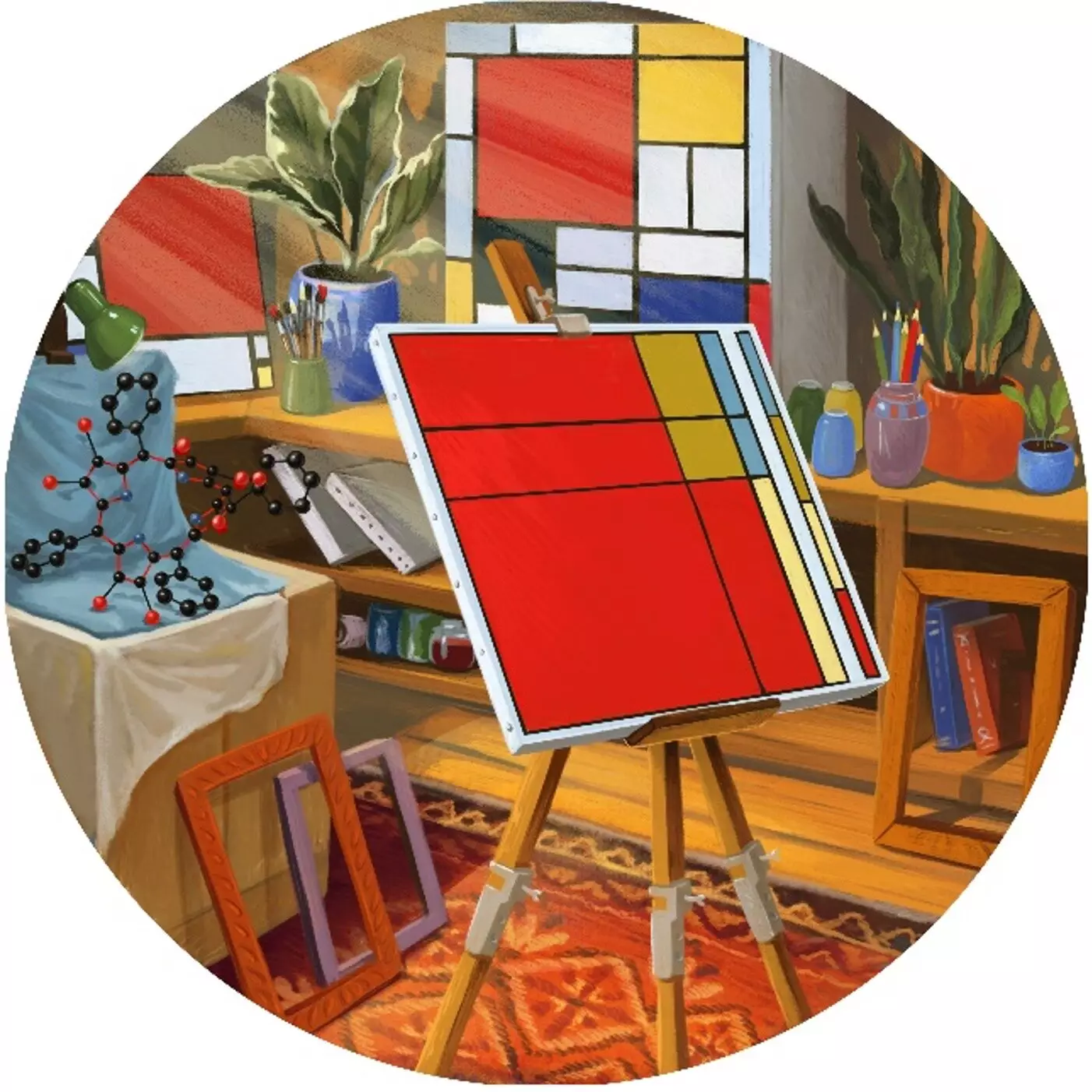In a groundbreaking blend of art and science, researchers at Trinity College Dublin have introduced an innovative computer program that melds the geometric elegance of molecular structures with the striking visual style of Piet Mondrian. This program not only produces captivating images that echo Mondrian’s iconic aesthetic, but also serves a deeper scientific purpose by enhancing our understanding of molecular symmetry and structure. The implications of such an interdisciplinary approach are profound, inviting both scientists and artists to consider new perspectives on their respective fields.
The exquisite simplicity of Mondrian’s work, characterized by bold primary colors and clear lines, mirrors the complexity often hidden within molecular structures. While scientists have long utilized a variety of techniques to explore and illustrate these complexities, the Trinity team’s artistic reinterpretation offers an engaging alternative. Accessing the program at http://www.sengegroup.eu/nsd allows users to convert any molecular structure into a visual tapestry reminiscent of the De Stijl art movement. Yet this transformation is not merely for aesthetic enjoyment; it invites viewers to explore the fundamental properties of the molecules themselves, making complex scientific concepts approachable and even beautiful.
Symmetry and Structure: A Marriage of Disciplines
The dual nature of this program can be credited to the collaborative vision of Professor Mathias O Senge and his team, particularly postdoctoral researcher Christopher Kingsbury. By leveraging the laws of chemistry that describe a molecule’s three-dimensional structure, this innovative tool allows users to observe molecular symmetry through a two-dimensional lens. The creators acknowledge that one of the core challenges in chemistry is the abstraction necessary to convey intricate details, particularly as they relate to a molecule’s behavior in various environments. By adopting Mondrian’s minimalist style, they have found a way to strip away the unnecessary details that often cloud our understanding, presenting a ‘blueprint’ of sorts that lays bare the elemental nature of the molecule at hand.
Professor Senge rightly notes, “Symmetry and shape are essential aspects of molecular structure.” His work echoes an important sentiment in science—the need for clarity amid complexity. In doing so, the program serves not just chemists, but a broader audience that might include artists or individuals intrigued by the interplay of structure and symmetry in nature. Such an intersection challenges the traditional boundary between scientific inquiry and artistic expression, demonstrating that the two can enrich one another in remarkable ways.
An Artistic Lens on Molecular Chemistry
Inspiration from Mondrian’s approach allows scientists to consider the principles of chemistry through a more artistic framework. The project’s core ambition reflects a growing understanding in modern science: effective communication often relies on abstraction and simplicity. As a tool, this program not only aids in deciphering how molecules interact but also encourages a reevaluation of how we visualize scientific data. By shifting the focus from complex equations and models to visually engaging representations, the science of chemistry becomes more accessible to individuals from all walks of life.
Indeed, the implications extend beyond the immediate utility of the program. With Mondrian’s style serving as a vehicle of expression, the research team constructs a new language of symmetry that bridges scientific inquiry with artistic exploration. As highlighted by Kingsbury, “very complex science is fed through an artistic lens,” suggesting that such synergies may reveal insights previously obscured by the rigid structures of traditional scientific presentation.
Porphyrins: Unveiling Nature’s Colors
Compounding the creativity behind this project are the research endeavors surrounding porphyrins—molecules that represent a captivating realm of color and biological function. Known as the “colors of life,” these pigments offer a vivid backdrop for exploring molecular properties and demonstrating how art can inform science. Professor Senge’s previous work with porphyrins, including the creation of biological sensors that mimic the predatory behavior of Venus flytraps, underscores the utility of integrating artistic thought into scientific practice.
By approaching molecular biology through an artistic lens, the Trinity team not only unveils the beauty inherent in these structures but also prompts viewers to reconsider how the shapes and properties of these pigments relate to their myriad functions in nature. As the team strives to enhance our understanding of these vital molecules, their artistic endeavor suggests a vital truth: when creativity intermingles with analytical thinking, we are often rewarded with richer insights into the fabric of our existence—all while celebrating the beauty of nature itself.
The initiative serves as a model for future collaborations between disciplines, urging the scientific community to view artistic interpretations not as distractions, but rather as essential tools for understanding the world. Through a Mondrian-esque exploration of molecular structures, scientists at Trinity College Dublin remind us that creativity isn’t merely a subjective expression, but a powerful means of elucidating the complexities of life.


Leave a Reply